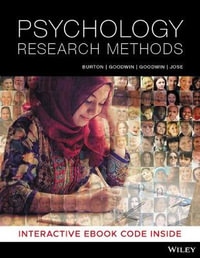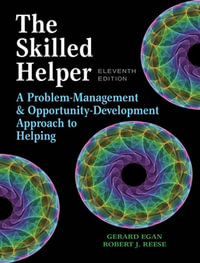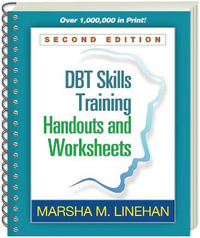Preface xv
About the Authors xix
PART I: Principles and Assumptions of Multicultural Social Work Practice 1
Chapter 1 Cultural Diversity and Implications for Multicultural Social Work Practice 3
Chapter Learning Objectives 3
Overview 4
Voices of Diversity and Marginalization 4
African American Male 4
Gay American 4
Female Worker 5
Person with a Disability 5
Person in Poverty 6
Individual from an Undocumented Immigrant Family 6
Diversification of the United States and Implications for Social Work 10
The Multiple Dimensions of Human Identity 14
Individual Level 16
Group Level 17
Universal Level 18
Individual and Universal Biases in Social Work 18
Multicultural Challenges in Social Work Practice 20
Implications for Multicultural Social Work Practice 22
Summary 23
Chapter 2 Theoretical Foundations for Multicultural Social Work Practice 29
Chapter Learning Objectives 29
Overview 30
Theoretical Perspectives for Competent Multicultural Social Work Practice 30
Ecological Systems Perspective 31
Strengths Perspective 33
Social Justice Perspective 35
Critical Perspective 37
Antiracism as a Social Work Agenda 39
Intersectionality Perspective 43
Implications for Multicultural Social Work Practice 53
Summary 54
Chapter 3 Becoming Culturally Competent in Social Work Practice 59
Chapter Learning Objectives 59
Overview 60
Defining Cultural Competence in Social Work Practice 60
Four Components of Cultural Competence 62
Competency 1: Becoming Aware of One’s Own Values, Biases, and Assumptions about Human Behavior 62
Competency 2: Understanding the Worldviews of Culturally Diverse Clients 63
Competency 3: Developing Appropriate Intervention Strategies and Techniques 64
Competency 4: Understanding Organizational and Institutional Forces That Enhance or Diminish Cultural Competence 66
Working Definition of Cultural Competence 67
Multidimensional Model of Cultural Competence in Social Work 69
Dimension 1: Group-Specific Worldviews 70
Dimension 2: Components of Cultural Competence 71
Dimension 3: Foci of Cultural Competence 77
What Is Multicultural Social Work Practice? 79
Implications for Multicultural Social Work Practice 81
Summary 82
PART II: Systemic Oppression and Social Justice 87
Chapter 4 Understanding the Sociopolitical Implications of Oppression and Power in Social Work Practice 89
Chapter Learning Objectives 89
Overview 90
A Clash of Expectations 90
Effects of Historical and Current Oppression 95
Ethnocentric Monoculturalism 96
Belief in Superiority 96
Belief in the Inferiority of Others 97
Power to Impose Standards 97
Manifestation in Institutions 98
The Invisible Veil 98
Historical Manifestations of Ethnocentric Monoculturalism 99
Impact of Ethnocentric Monoculturalism in Helping Relationships 102
Credibility, Expertness, and Trustworthiness in Multicultural Social Work Practice 105
Credibility of the Social Worker 105
Implications for Multicultural Social Work Practice 110
Summary 111
Chapter 5 Microaggressions in Social Work Practice 117
Chapter Learning Objectives 117
Overview 118
What Did He Really Mean? 118
Microaggression as a Form of Oppression 121
Microaggressions and the Clash of Sociodemographic Realities 122
Microaggressions and the Invisibility of Unintentional Expressions of Bias 131
Microaggressions and the Perceived Minimal Harm 133
The Catch-22 of Responding to Microaggressions 133
Categories of Microaggressions 133
Social Work Practice and Microaggression 136
Microinsults and Direct Social Work Practice 137
Microinvalidations and Direct Social Work Practice 140
Implications for Multicultural Social Work Practice 144
Summary 145
PART III: Racial/Cultural Identity Development 149
Chapter 6 Racial/Cultural Minority Identity Development 151
Chapter Learning Objectives 151
Overview 152
Who Am I? 152
Racial/Cultural Identity Development Models 154
Black Identity Development Models 156
Other Racial/Ethnic Identity Development Models 157
Feminist Identity Theory 158
Working Racial/Cultural Identity Development Model 158
Conformity Stage 159
Who Am I-White or Black? 160
Dissonance Stage 165
Resistance and Immersion Stage 166
Introspection Stage 168
Integrative Awareness Stage 170
Implications for Multicultural Social Work Practice 172
Summary 173
Chapter 7 White Racial Identity Development 179
Chapter Learning Objectives 179
Overview 180
“What Does It Mean to Be White?” 180
Forty-Two-Year-Old White Businessman 180
Twenty-Six-Year-Old White Female College Student 181
Sixty-Five-Year-Old White Male Construction Worker (Retired) 181
Thirty-Four-Year-Old White Female Stockbroker 182
Twenty-Nine-Year-Old Latina Administrative Assistant 182
Thirty-Nine-Year-Old Black Male Salesman 183
Twenty-One-Year-Old Chinese American Male College Student (Majoring in Ethnic Studies) 183
The Invisible Whiteness of Being 184
Understanding the Dynamics of Whiteness 185
Models of White Racial Identity Development 187
The Hardiman White Racial Identity
Development Model 188
The Helms White Racial Identity Model 191
The Process of White Racial Identity Development: A Descriptive Model 196
Conformity Stage 196
Dissonance Stage 197
Resistance and Immersion Stage 199
Introspection Stage 200
Integrative Awareness Stage 201
Implications for Multicultural Social Work Practice 202
Summary 203
PART IV: Practice Dimensions of Multicultural Social Work 207
Chapter 8 Barriers to Effective Multicultural Clinical Practice 209
Chapter Learning Objectives 209
Overview 210
Cultural Barriers: A Case Example 210
Generic Characteristics of Counseling and Therapy 214
Sources of Conflict and Misinterpretation in Clinical Practice 218
Culture-Bound Values 218
Class-Bound Values 226
Language Barriers 232
Generalizations and Stereotypes: Some Cautions 233
Implications for Multicultural Social Work Practice 234
Summary 235
Chapter 9 Cultural Styles in Multicultural Intervention Strategies 241
Chapter Learning Objectives 241
Overview 242
“Speaking from My ‘Cultural Space’”: A Case Example 242
Communication Styles 244
Nonverbal Communication 246
Proxemics 246
Kinesics 247
Paralanguage 250
High- versus Low-Context Communication 252
Sociopolitical Facets of Nonverbal Communication 254
Nonverbals as Refl ections of Bias 255
Nonverbals as Triggers of Biases and Fears 258
Differential Skills in Multicultural Social Work Practice 261
Implications for Multicultural Social Work Practice 264
Summary 265
Chapter 10 Multicultural Family Social Work Interventions 269
Chapter Learning Objectives 269
Overview 270
Family Life, Mental Health, and Culture: A Case Study 270
Family Systems Approaches and Assumptions 276
Issues in Working with Racial/Ethnic Minority Families 279
Racial/Ethnic Minority Reality 279
Conflicting Value Systems 280
Biculturalism and Acculturation 280
Ethnic Differences in Minority Status 281
Ethnicity and Language 283
Ethnicity and Social Class 284
Multicultural Family Social Work: A Conceptual Model 285
People-Nature Relationship Dimension 286
Time Dimension 288
Relational Dimension 290
Activity Dimension 291
Nature of People Dimension 293
Implications for Multicultural Social Work Practice 294
Summary 296
Chapter 11 Religion, Spirituality, and Indigenous Methods of Healing 301
Chapter Learning Objectives 301
Overview 302
Religion, Spirituality, and Social Work Education 302
Religious Affiliation and Ethnic Identity 306
Asian Americans and Pacific Islanders and Religious Identity 307
African American Religious Identity 307
Latino/Hispanic Religious Identity and Affiliation 308
Native American Religious Practices 309
Muslim Americans and Religious Affiliation 309
Spiritual Assessments in Social Work Practice 310
Indigenous Spirituality and Healing 311
Spirit Attacks: The Case of Vang Xiong 312
The Legitimacy of Culture-Bound Syndromes: Nightmare Deaths and the Hmong Sudden Death Phenomenon 314
Causation and Spirit Possession 318
Shaman as Therapist: Commonalities 320
Principles of Indigenous Healing 321
Holistic Outlook, Interconnectedness, and Harmony 324
Belief in Metaphysical Levels of Existence 325
Spirituality in Life and the Cosmos 327
Implications for Multicultural Social Work Practice 330
Summary 333
Chapter 12 Multicultural Organizational Change: Antiracist Practice and Social Justice 341
Chapter Learning Objectives 341
Overview 342
Where Do Social Workers Do Social Work? 342
Monocultural versus Multicultural Organizational Perspectives in Social Work 345
Lesson 1: A failure to develop a balanced perspective between person focus and systems focus can result in false attribution of the problem. 348
Lesson 2: A failure to develop a balanced perspective between person focus and system focus can result in an ineff ective and inaccurate treatment plan that is potentially harmful to the client. 349
Lesson 3: When the “client” is an organization or a larger system and not an individual, a major paradigm shift is needed to attain a true understanding of the problem and identify the solution. 349
Lesson 4: Organizations are microcosms of the wider society from which they originate. As a result, they are likely to be reflections of the monocultural values and practices of the larger culture. 350
Lesson 5: Organizations are powerful entities that inevitably resist change and possess within their arsenal many ways to force compliance in individuals. 350
Lesson 6: When multicultural organizational development is required, alternative helping roles that emphasize systems intervention must be part of the role repertoire of the social worker. 351
Lesson 7: Although remediation will always be needed, prevention is better. 351
Models of Multicultural Organizational Development 352
Culturally Competent Social Service Agencies 355
Antiracist Practice and Social Justice 359
Principle 1: Having Intimate and Close Contact with Others 360
Principle 2: Cooperating Rather Th an Competing 361
Principle 3: Sharing Mutual Goals 362
Principle 4: Exchanging Accurate Information 363
Principle 5: Sharing an Equal Relationship 364
Principle 6: Supporting Racial Equity by Leaders and Groups in Authority 366
Principle 7: Feeling Connected and Experiencing a Strong Sense of Belonging 367
Implications for Multicultural Social Work Practice 368
Summary 369
Chapter 13 Evidence-Based Multicultural Social Work Practice 373
Chapter Learning Objectives 373
Overview 374
From “Doing Good” to “Doing Well” 374
What Is Evidence-Based Practice? 375
Evidence-Based Practice with Clients of Color 376
Evidence-Based Practice and Empirically Supported Treatments 378
Integration of EBP and EST to Enhance Cultural Sensitivity 379
Empirically Supported Relationships 385
The Working Alliance 386
Emotional or Interpersonal Bond 388
Empathy 389
Positive Regard, Respect, Warmth, and Genuineness 392
Self-Disclosure 393
Management of Countertransference 393
Goal Consensus 394
Implications for Multicultural Social Work Practice 395
Summary 396
PART V: Culturally Competent Social Work Practice with Diverse Populations 403
Chapter 14 Profiles of Diverse Populations 405
Chapter Learning Objectives 405
Overview 406
Culturally Competent Social Work Practice with African Americans 407
Important Dimensions 407
Culturally Competent Social Work Practice with Asian Americans and Pacific Islanders 412
Important Dimensions 413
Culturally Competent Social Work Practice with Native Americans/First Nations Peoples and Alaska Natives 420
Important Dimensions 422
Culturally Competent Social Work Practice with Latinos/Hispanics 430
Important Dimensions 432
Culturally Competent Social Work Practice with Immigrants and Refugees 440
Important Dimensions 443
Culturally Competent Social Work Practice with Biracial/Multiracial Persons 449
Important Dimensions 450
Culturally Competent Social Work Practice with Women 460
Important Dimensions 462
Culturally Competent Social Work Practice with LGBT Individuals 469
Important Dimensions 470
Culturally Competent Social Work Practice with Older Adults 475
Important Dimensions 476
Culturally Competent Social Work Practice with Persons with Disabilities 485
Important Dimensions 486
Summary 491
Author Index 503
Subject Index 515

























